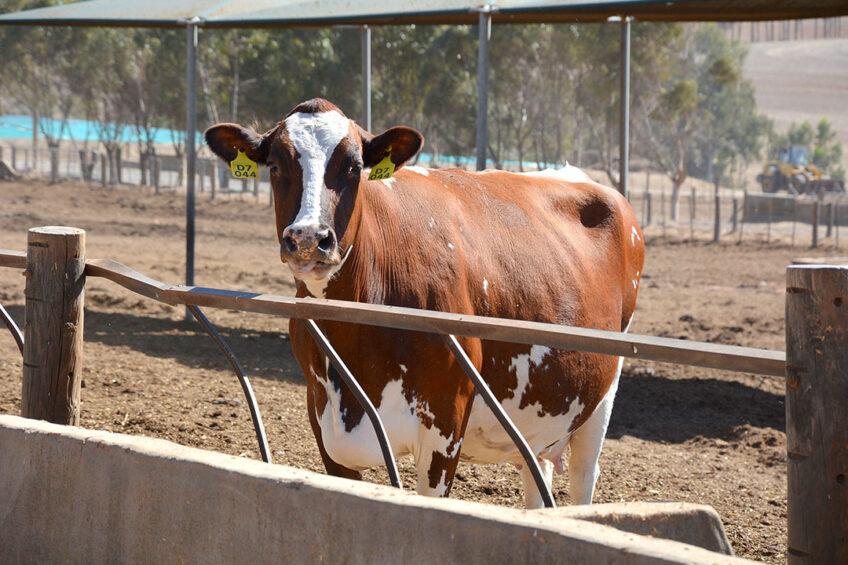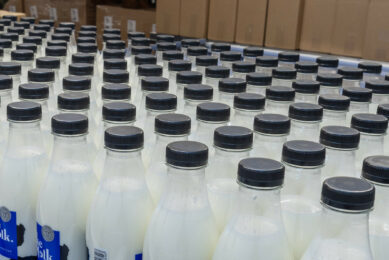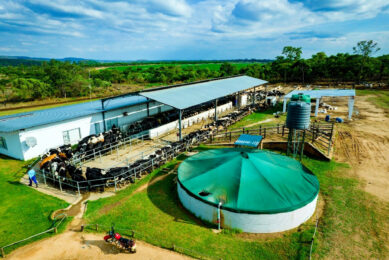Zimbabwe: EU funding for dairy sector

The dairy industry in Zimbabwe is expected to be one of the key contributors to the government’s target of bringing the nation to a middle-income country by 2030.
The EU’s cooperation with Zimbabwe, under the current funding period (2014-2020), aims to preserve the country’s democracy, bring stability, and build resilience to build a strong basis for inclusive and sustainable growth. Following the financial support from the EU, amounting to €40 million, the Zimbabwe Agricultural Growth Programme (ZAGP) was established in 2019. ZAGP addresses the challenges affecting dairy production, with the goal of turning dairy farming into a vibrant sector that significantly contributes to the country’s economy. The focus is on building the capacity of farmers, service institutions, and the private sector, through increased investment, institutional reforms, and policy alignment.

Project overview
The ZAGP project is spearheaded by the TranZDVC (Transforming Zimbabwe’s Dairy Value Chain for the Future) platform. The following stakeholders are actively involved:
- We Effect (a Swedish organisation);
- Zimbabwe Association of Dairy Farmers (ZADF);
- Zimbabwe Farmers Union (ZFU);
- Zimbabwe Dairy Industry Trust (ZDIT).
One of TranZDVC’s key activities has been focusing on investments in productive assets to improve the performance of the dairy value chain through the Matching Grants Facility (MGF). The aim is to support investments to increase the production of affordable feed, enhance dairy breeds, increase milk production and milk sales, and reduce unemployment rate by creating decent jobs in the industry. The project targets all scales: small-scale, medium-scale, and large-scale farmers in the dairy value chain. An overview of the TranZDVC programme was also broadcasted on the country’s national TV channel (ZBC).
 Making the dairy industry more resilient
Making the dairy industry more resilient
Covid-19 has had a big impact on many sectors, and the dairy industry is no different. A new project aims to make the dairy sector more resilient.
Zimbabwe dairy industry overview
The country’s dairy sector experienced an annual milk production decrease from an all-time peak of 260 million litres in the early 1990s, to less than 35 million litres in 2008. The current figures are around 70 million litres, which is well short of the national demand of 120 million litres. The country imports approximately 48% of its annual milk requirements. The culprits behind this decline are the several challenges that the industry is facing, chief among them being lack of foreign currency for the procurement of inputs as well as a genetically poor and depleted national dairy herd. The other challenges include lack of funding, high feed costs aggravated by recurrent droughts, inadequate farming practices and skills of the farmer, poor policies and coordination amongst all stakeholders, and insufficient extension services. However, despite the eminent challenges in the sector, national milk output has been on a marginal increase over the past few years. The ZAGP project is expected to double the current milk production by year 2022. ZAGP is also covering beef, pig, poultry, and goats, throughout the country.
 Dairy farming and partnering with AI systems
Dairy farming and partnering with AI systems
Discerning accurate information about artificial intelligence in agriculture is very important, as is an examination of actual uses.
Opportunities
Besides several challenges that mar the vibrance of the Zimbabwe dairy industry, hope, in form of opportunities, is around the corner. The EU funding, coupled with other opportunities, is one of the main opportunities that is expected to bring the dairy industry to its full swing.
 Government promotion of new dairy investors
Government promotion of new dairy investors
The government is putting all efforts to ensure that it brings dairy investors into the country, as reported in the June 2019 publication by the Herald, Zimbabwe’s largest daily newspaper.
“We have some exciting new investments coming on board, one of them is the Belarusian investment. We signed a MOU with the Belarusian government for agricultural investment, they are bringing in 1000 herd of cattle for dairy production,” said Vangelis Haritatos, the Zimbabwe Deputy Minister of Lands, Agriculture, Water, Climate and Rural Resettlement. He also indicated that Zimbabwe has the potential to produce over 250 million litres annually and the government is making sure that this potential is realised within the next 3 years. You can find the full story here.
 Global dairy sector: 4 important transitions
Global dairy sector: 4 important transitions
Here we look at the 4 essential transitions for sustainability and profitability in the dairy industry.
 Alternative sources of energy
Alternative sources of energy
Electricity is one of the main constraints not only in the dairy sector, but in every part of the country where energy is required. Working with other stakeholders, SNV (Netherlands Development Organization) is involved in the development of the Rural Solar Market Development Project and the Zimbabwe Domestic Biogas Program, aiming at increasing access to renewable energy and create meaningful self-employment opportunities. Most small-scale farmers are exploring possibilities of these alternative energy sources.
 Commercial farmers to be compensated
Commercial farmers to be compensated
The government of Zimbabwe stated that foreign white farmers settled in Zimbabwe whose land was seized during the land redistribution program, can apply to get it back and will be offered land elsewhere if restitution proves impractical. Zimbabwe agreed to pay US$3.5 billion in compensation to local white farmers whose land was forcibly taken by the government. Before the land redistribution program, commercial dairy farms highly contributed to the economy of the country. The full story is found in the
Join 13,000+ subscribers
Subscribe to our newsletter to stay updated about all the need-to-know content in the dairy sector, two times a week.










